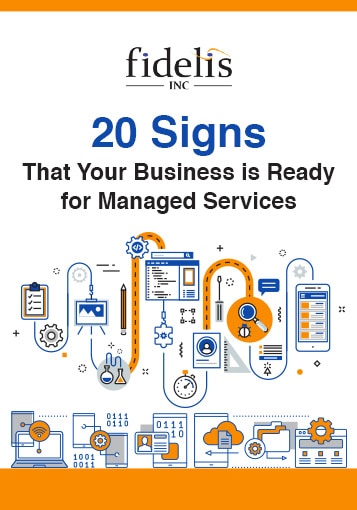Network cabling might not be the most exciting area of business technology, which is why it’s importance is often overlooked. Yet the infrastructure your systems run on influences many key factors, such as performance, reliability, security, and scalability.
There are only two ways of transporting data across a cabled network. Home users and many small businesses use conventional point-to-point cabling. With these systems, a single cable connects one device to another component on the network, the most common example being a desktop computer connected directly to the broadband router. That’s fine if you only have a handful of devices on your network, but problems arise when you start running out of network ports and you have to install additional switches.
Structured cabling is more complex beneath the hood, since it involves installing a backbone communications infrastructure and running localized cabling panels throughout the office. But while it generally requires professional installation, structured cabling provides many benefits.
#1. Easier to manage
Imagine an employee is using a laptop for work, but they want to take advantage of the better performance, reliability, and security of a cabled connection. With a point-to-point system, they have to run a cable all the way from the device to the nearest router or access point. That may not always be practical. With structured cabling, all they need to do is connect a short cable to the local cabling panel.
Now, imagine trying to do this in an office with dozens of desks. It quickly becomes impossible at scale, especially when you factor in additional networked devices like printers, scanners, or internet-connected smart devices. Structured cabling helps you plan for the future with a much greater degree of freedom. A professional installer will follow the universal rules for coding and labeling your cables and network components so you can easily swap out any faulty components.
#2. Improved performance
In theory, a direct connection between a device and the local router should be faster, but it’s a bit different in practice. When you’re trying to manage hundreds of disorganized cables, it’s much harder to maintain everything and repair faults. For example, using a Cat-6 or earlier ethernet cable can result in reduced bandwidth and interference problems, particularly during VoIP phone calls and video conferences.
Structured cabling installed professionally follows a strict set of standards to ensure that every cable and other component used meet the same standards of performance and reliability and that everything is compatible. Any problems with faulty cables are much easier to identify too, resulting in fewer incidents of costly downtime. Network congestion will also be less likely, since many performance bottlenecks can be eliminated by proper cabling. This also applies to wireless networks, which may receive interference from problematic cabling.
#3. Enhanced safety
Having hundreds of cables sprawled out across the office floor is hardly good for employee safety, given the increased risk of trips and falls. Despite the increasing prevalence of wireless connectivity, almost every office still depends heavily on its cabling infrastructure, and as the business grows, the number of cables (and the risks they introduce) can quickly grow beyond your ability to manage it.
Trying to install structured cabling yourself may result in a failure to comply with the Code of Federal Regulations (CFR) enforced by the Occupational Safety and Health Administration (OSHA). Professional cabling installers will follow the rules and best practices necessary for reducing the risk of falls, electrical failures, and electrocution from high-voltage cables and uninterruptible power supplies (UPSs).
Fidelis Inc. provides peace of mind through dependable IT solutions and support tailored to the unique needs of your organization. Talk to us today to find out more.
Download our free eBook!
Before you skip ahead to picking and choosing which IT services you want and how they’re managed, pinpoint precisely where your technology is falling behind by reading our free eBook, 20 Signs That Your Business is Ready for Managed Services.



